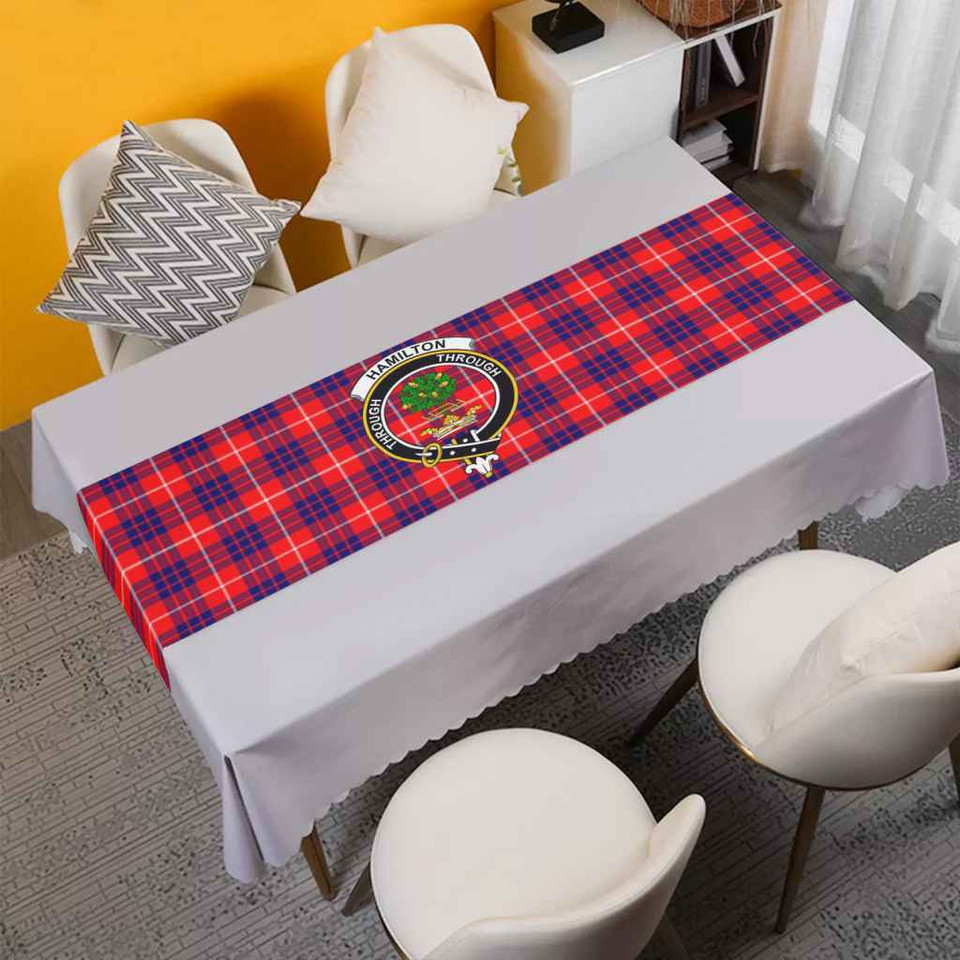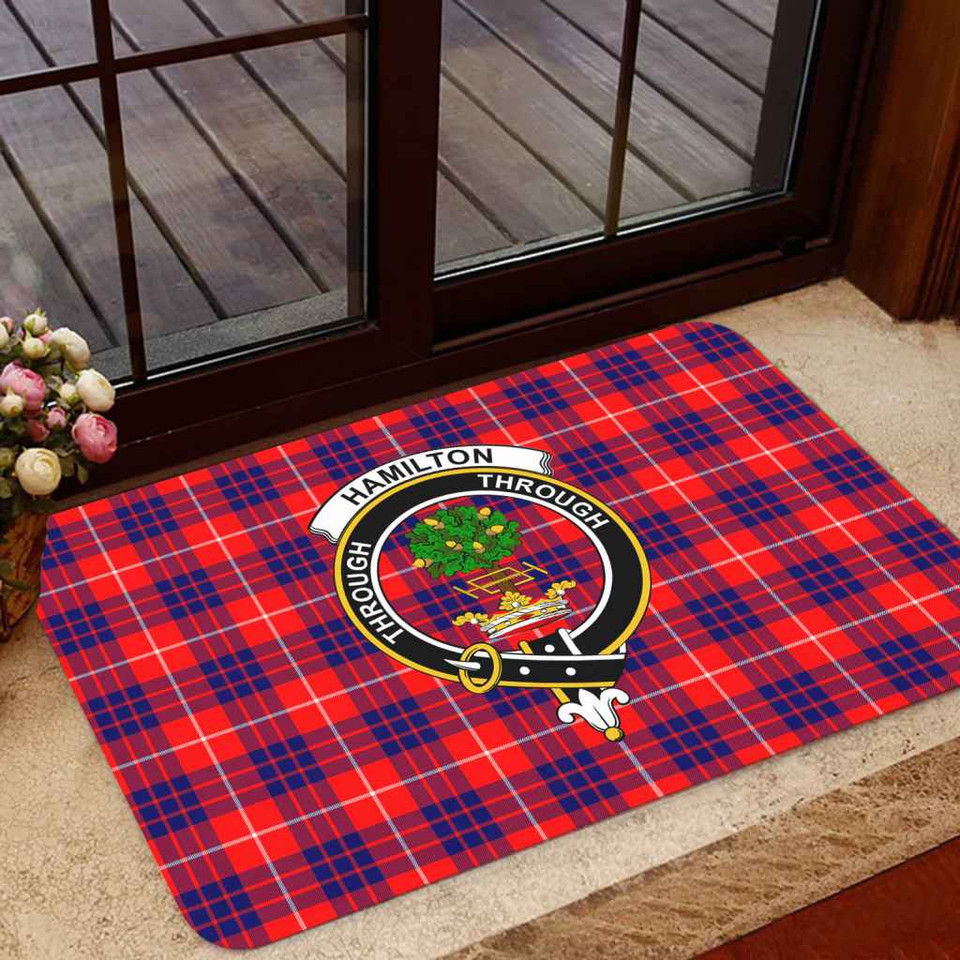Posted by Anna on 22nd Nov 2022
Hamilton Tartan: Explore The Past And Tartan Of Clan Hamilton
A Scottish clan from the Scottish Lowlands is known as the Clan Hamilton or House of Hamilton. This clan's Hamilton tartan is currently fashionable as well. Let's investigate the clan Hamilton's fascinating past and their distinctive tartan.
Origin Of Clan Hamilton Tartan

Hamilton clan
Walter fitz Gilbert of Hambledon, who appears in a charter to the Monastery of Paisley in or about 1294, is the ancestor of the Hamilton chiefs. Although his possessions initially seem to have been in Renfrewshire, he was rewarded for his loyalty to Robert the Bruce with territories in Lanarkshire and the Lothians. These territories included Cadzow, which later evolved into the South Lanarkshire town of Hamilton.
James Hamilton, 1st Lord Hamilton, wed Princess Mary, a Scottish king's daughter, in 1474. James Hamilton, the first Earl of Arran, was their son. On the Isle of Arran, the family built an addition to Brodick Castle. James Hamilton, Duke of Châtellerault, the second Earl of Arran, was Mary, Queen of Scots' and James IV of Scotland's heir apparent. In order to establish his claim to the throne, he intended to marry his son to the queen while she was still a young child while serving as regent of Scotland. Family history was written during this period by Friar Mark Hamilton.
Mary, however, wed a French throne heir in place of the royal wedding, which never happened. Because James Hamilton had played a significant role in the marriage talks with France, he was made Duke of Châtellerault. He strongly opposed Mary's marriage to Henry Stuart, Lord Darnley, and was consequently exiled for five years in 1561. His hopes were revived when Mary's marriage ended with the death of the Dauphin of France.
James Hamilton of Bothwellhaugh, a Scottish ally of Mary, Queen of Scots, was responsible for the January 1570 assassination of James Stewart, 1st Earl of Moray, the regent of Scotland.
James Hamilton, 2nd Marquess of Hamilton, the 4th Earl of Arran, was appointed Lord Chancellor of Scotland and given custody of both the important royal fortresses of Edinburgh Castle and Stirling Castle. In 1599, he was promoted to the position of marquess. Claud Hamilton, 1st Lord Paisley, who had been made Lord Paisley in 1587 and afterward made Lord Abercorn, was his brother. This branch of the family proved successful as well, and in 1868 Abercorn has elevated to an earldom and then a dukedom.
Civil War And Downfall Of The Clan
James Hamilton, 1st Duke of Hamilton, the third Marquess, was a fervent admirer of Charles I. In 1643, Charles gave Hamilton the dukedom as a reward, elevating Hamilton to the position of supreme peer in Scotland. Hamilton commanded a royalist army that invaded England but was routed by Oliver Cromwell's parliamentarians in the Battle of Preston (1648). Soon after the king's execution in 1649 at Whitehall, Hamilton was also put to death.
Although he was likewise a valiant soldier, William Hamilton, 2nd Duke of Hamilton, was killed at the Battle of Worcester in 1651. The third Duchess of Hamilton, Anne Hamilton, who is the first Duke's daughter, received the title. She was a very intelligent woman who inherited estates that were significantly in debt. Her kinsman Hamilton, Earl of Abercorn, contested her claim to the throne, which made matters worse. William Douglas, the 1st Earl of Selkirk, and Anne were wed (later Duke of Hamilton). James Hamilton, the 4th Duke of Hamilton, was their son who perished in a contentious duel in London in 1712.
Abode Of The Clan Hamilton

Dungavel House
The family's residence was Hamilton Palace in Hamilton, South Lanarkshire, since the 13th century. It was one of the largest non-royal palaces in Europe when it was constructed by Duchess Anne and her husband William Douglas, 3rd Duke of Hamilton, and it was at its largest under the 10th and 11th dukes in the middle of the nineteenth century.
The family's mines caused the palace to subside excessively, which resulted in its condemnation and demolition in 1921. The 13th Duke next relocated to Dungavel House, which is close to Strathaven. When Rudolf Hess embarked on his ill-fated 1941 visit to the Douglas, 14th Duke of Hamilton, he had this as his destination.
Dungavel was sold to the coal board in 1947, after which it was acquired by the government, which converted it into an open prison. It is currently the location of a contentious holding facility for asylum seekers.
The family relocated to East Lothian's Lennoxlove House, still the Duke's home today.
Hamilton Tartan
The Sobieski Stuart brothers created other comparable designs, and this one was among them. It was first mentioned in their Vestiarium Scoticum, published in 1842. Before the release of this outstanding work, there was no proof of a Hamilton tartan.

Hamilton tartan

Hamilton tartan

Scottish Hamilton Clan Crest Tartan Table Runner. Buy products here.

Scottish Hamilton Clan Crest Tartan Door Mat. Buy products here.
We have all these items for sale. If you are interested in Hamilton Tartan, please visit our online store here.
In particular, we have a 15% discount code exclusively for the readers reading this article! Please insert code: VBLOG15 for your cart. Happy shopping!

